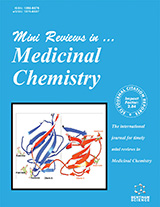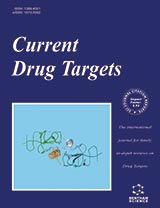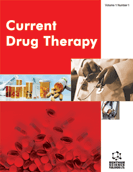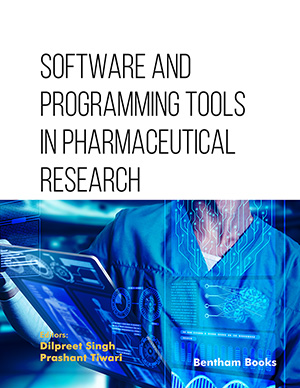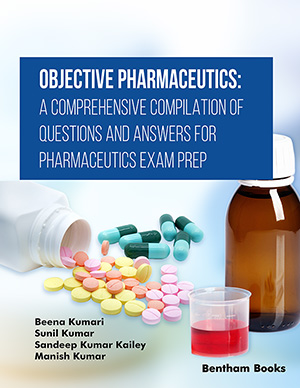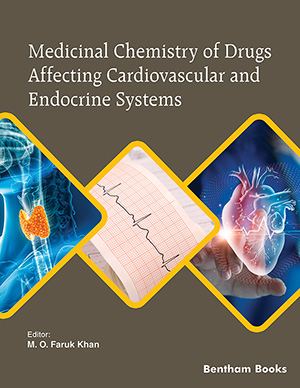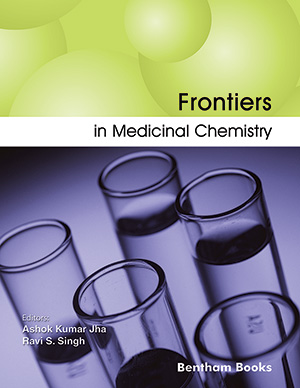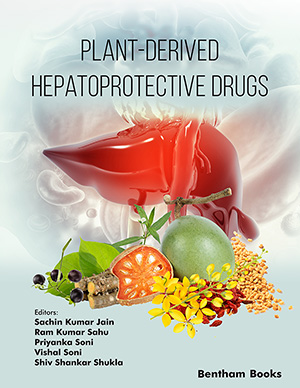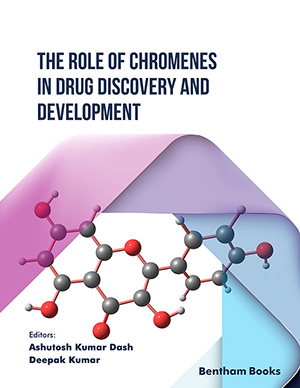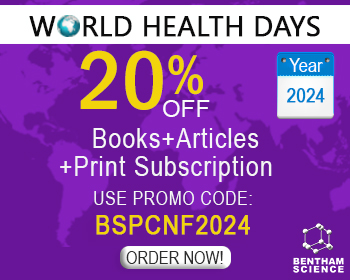Abstract
Activating mutations of the FLT3 receptor tyrosine kinase are the most common recurring genetic abnormality in acute myelogenous leukemia (AM). Inhibition of FLT3 kinase activity by small molecule inhibitors has been proposed as a novel therapeutic approach AML. The pre-clinical and clinical development of candidate FLT3 inhibitors will be reviewed.
Keywords: flt3, tyrosine kinase, kinase inhibitor, aml, pdgfr
Mini-Reviews in Medicinal Chemistry
Title: Targeting FLT3 Kinase in Acute Myelogenous Leukemia: Progress, Perils, and Prospects
Volume: 4 Issue: 3
Author(s): Michael C. Heinrich
Affiliation:
Keywords: flt3, tyrosine kinase, kinase inhibitor, aml, pdgfr
Abstract: Activating mutations of the FLT3 receptor tyrosine kinase are the most common recurring genetic abnormality in acute myelogenous leukemia (AM). Inhibition of FLT3 kinase activity by small molecule inhibitors has been proposed as a novel therapeutic approach AML. The pre-clinical and clinical development of candidate FLT3 inhibitors will be reviewed.
Export Options
About this article
Cite this article as:
Heinrich C. Michael, Targeting FLT3 Kinase in Acute Myelogenous Leukemia: Progress, Perils, and Prospects, Mini-Reviews in Medicinal Chemistry 2004; 4 (3) . https://dx.doi.org/10.2174/1389557043487394
| DOI https://dx.doi.org/10.2174/1389557043487394 |
Print ISSN 1389-5575 |
| Publisher Name Bentham Science Publisher |
Online ISSN 1875-5607 |
Call for Papers in Thematic Issues
Bioprospecting of Natural Products as Sources of New Multitarget Therapies
According to the Convention on Biological Diversity, bioprospecting is the exploration of biodiversity and indigenous knowledge to develop commercially valuable products for pharmaceutical and other applications. Bioprospecting involves searching for useful organic compounds in plants, fungi, marine organisms, and microorganisms. Natural products traditionally constituted the primary source of more than ...read more
Computational Frontiers in Medicinal Chemistry
The thematic issue "Computational Frontiers in Medicinal Chemistry" provides a robust platform for delving into state-of-the-art computational methodologies and technologies that significantly propel advancements in medicinal chemistry. This edition seeks to amalgamate top-tier reviews spotlighting the latest trends and breakthroughs in the fusion of computational approaches, including artificial intelligence (AI) ...read more
Natural Products and Dietary Supplements in Alleviation of Metabolic, Cardiovascular, and Neurological Disorders
Metabolic disorders like diabetes, obesity, inflammation, oxidative stress, cancer etc, cardiovascular disorders like angina, myocardial infarction, congestive heart failure etc as well as neurological disorders like Alzheimer?s, Parkinson?s, Epilepsy, Depression, etc are the global burden. They covered the major segment of the diseases and disorders from which the human community ...read more
Natural Products in Drug Discovery
Natural products have always been one of the important ways of drug discovery due to their novel skeleton and diverse functional group characteristics. According to statistics, between 1981 and 2019, the FDA approved a total of 1,394 small molecule drugs for marketing, of which 930 marketed drugs originated from the ...read more
 5
5
- Author Guidelines
- Graphical Abstracts
- Fabricating and Stating False Information
- Research Misconduct
- Post Publication Discussions and Corrections
- Publishing Ethics and Rectitude
- Increase Visibility of Your Article
- Archiving Policies
- Peer Review Workflow
- Order Your Article Before Print
- Promote Your Article
- Manuscript Transfer Facility
- Editorial Policies
- Allegations from Whistleblowers
Related Articles
-
Immunotoxins and Other Conjugates: Pre-clinical Studies
Mini-Reviews in Medicinal Chemistry Genetic Mechanisms and Aberrant Gene Expression during the Development of Gastric Intestinal Metaplasia and Adenocarcinoma
Current Genomics Heat Shock Proteins (HSPs) Based Anti-Cancer Vaccines
Current Molecular Medicine Recent Patents on Cancer Stem Cell Biomarkers
Recent Patents on Biomarkers Astatine Radiopharmaceuticals: Prospects and Problems
Current Radiopharmaceuticals Association of Metronidazole with Cancer: A Potential Risk Factor or Inconsistent Deductions?
Current Drug Metabolism Development of Decision Tree Models for Substrates, Inhibitors, and Inducers of P-Glycoprotein
Current Drug Metabolism Retinoid Receptors in Inflammatory Responses: A Potential Target for Pharmacology
Current Drug Targets - Inflammation & Allergy Design of Magnetic Nanoparticles-Assisted Drug Delivery System
Current Pharmaceutical Design Recent Advances on Dark and Light-Activated Cytotoxity of Imidazole- Containing Ruthenium Complexes
Mini-Reviews in Medicinal Chemistry The Effects of Weightlessness on the Human Organism and Mammalian Cells
Current Molecular Medicine Biochemical Markers of Renal Function
Current Medicinal Chemistry Strategies for the Biological Evaluation of Gold Anticancer Agents
Anti-Cancer Agents in Medicinal Chemistry γ δ T Cell Modulation in Anticancer Treatment
Current Cancer Drug Targets Mesenchymal Stromal Cells from Umbilical Cord Blood
Current Stem Cell Research & Therapy Is HIV Involved in the Pathogenesis of Non-Infectious Pulmonary Complications in Infected Patients?
Current HIV Research Quercetin Promotes Cell Cycle Arrest and Apoptosis and Attenuates the Proliferation of Human Chronic Myeloid Leukemia Cell Line-K562 Through Interaction with HSPs (70 and 90), MAT2A and FOXM1
Anti-Cancer Agents in Medicinal Chemistry The Role of RNA Modifications and RNA-modifying Proteins in Cancer Therapy and Drug Resistance
Current Cancer Drug Targets Gene and Stem Cell Therapy in the Treatment of Erectile Dysfunction and Pulmonary Hypertension; Potential Treatments for the Common Problem of Endothelial Dysfunction
Current Gene Therapy Thiourea and Guanidine Derivatives as Antimalarial and Antimicrobial Agents<sup>§</sup>
Current Topics in Medicinal Chemistry


